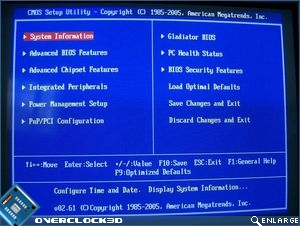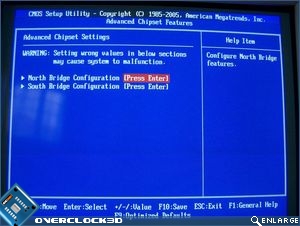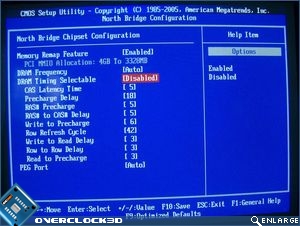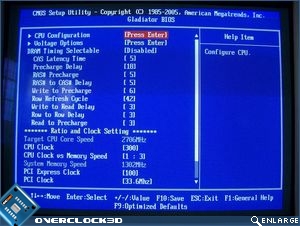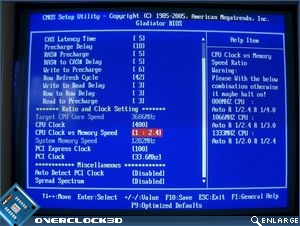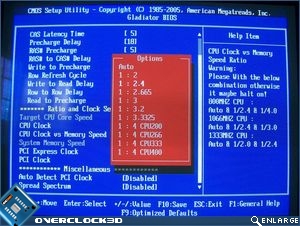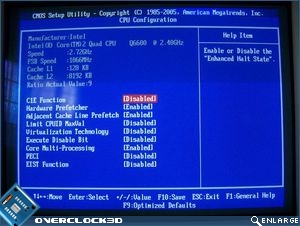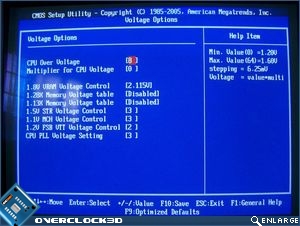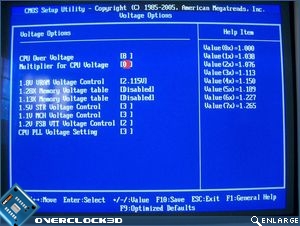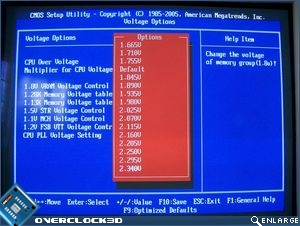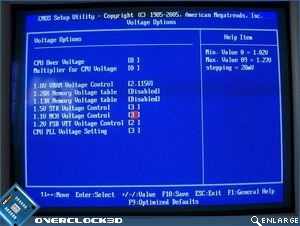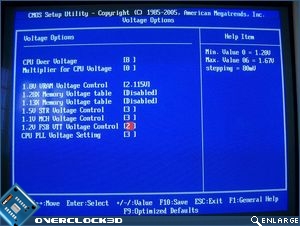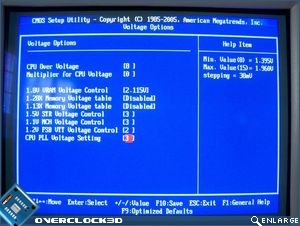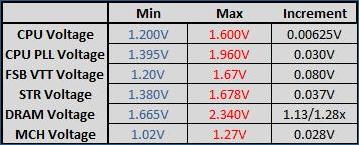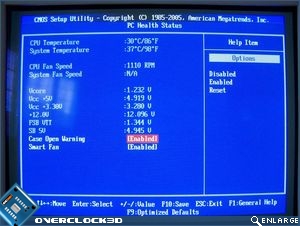Foxconn DigitaLife ELA P45 Motherboard
Interestingly, Foxconn has decided to include two areas where you are able to adjust memory timings – in the Gladiator BIOS and under the North Bridge Configuration settings. I’m not really sure why, but I’ll take an educated guess that the Gladiator BIOS is tacked onto the existing AMI BIOS, and the result is an overlap of the two. The timings are also setup in a non-standard layout with the primary timings scattered amongst the secondary timings which ultimately makes it even harder to tune this board using decent memory.
Under the CPU Configurations tab we can see the obligatory C1E Function; Hardware Prefetcher; Adjacent Cache Line Prefetch; PECI and EIST Function. Hang on a minute, are we missing something here? Where the hell do we adjust the CPU multiplier? Leaving out this critical function on a P45-based motherboard is akin to having a one legged man in an arse kicking competition. The motherboard is effectively crippled!
Under the Voltage Options tab Foxconn has made some shall we say, interesting inclusions. In what can only be described as a crazy way of adjusting CPU voltage, you basically pick a number from zero (1.20V) through to sixty four (1.6V max) with a voltage stepping of 6.25mV. A simple drop down menu would have been a way easier way of adjusting CPU voltages Foxconn. Furthermore; if you factor into the equation the presence of the CPU voltage multiplier, the likelihood of a fried CPU becomes a very real possibility. Memory voltage sees a much more maligned 1.8V (default) through to 2.3V – of course if you use the memory voltage multiplier then remember to adjust accordingly.
Â
In all honesty, the Foxconn ELA BIOS provides some nice features but at the same time blurs the lines between what this motherboard is, and what it can be. For a multimedia motherboard, the BIOS ‘cuts the mustard’ but for overclocking it unfortunately falls well short in my opinion.
Let’s head over the page to see how we’re going to test the Foxconn ELA…




